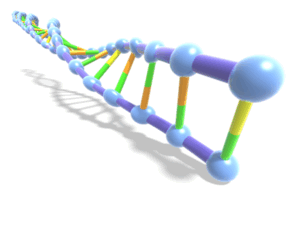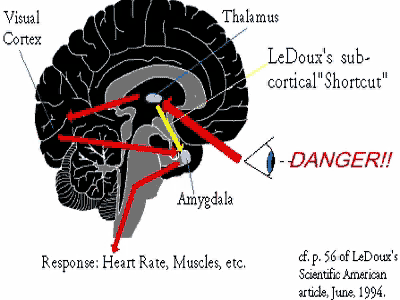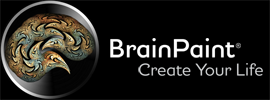Polysubstance Abuse – There is a simple, evidence-based way to improve outcomes.
Watch BrainPaint® on addiction
episode of CBS’s The Doctors:
Understanding Addiction in a Nutshell
Think of addiction as an allergy; an abnormal reaction to a substance. Kenneth Blum, PhD identified the Reward Deficiency Syndrome, which is a defect in the dopamine receptor gene, D2A1 allele. People who have this defective gene lack a sufficient number of dopamine receptors in their brains to produce feelings of well-being. Individuals who have a family history of alcoholism or polysubstance abuse may be born with this syndrome. After an addicts first experience with alcohol he or she immediately feels better than ever has before. This feeling of wholeness significantly trumps all accomplishments and success previously achieved. In addition, people with this gene tend to be more severely affected by polysubstance abuse, begin using at an earlier age and have more severe episodes of intoxication.
Genetics vs. Epigenetics
 Everyone inherits their genome, but they can potentially alter their epigenome. Understanding addiction as it relates to epigenetics brings in responsibility, as well as, hope. People who are born with the gene for addiction do not need to be a victim of their genetics.
Everyone inherits their genome, but they can potentially alter their epigenome. Understanding addiction as it relates to epigenetics brings in responsibility, as well as, hope. People who are born with the gene for addiction do not need to be a victim of their genetics.
Research with identical twins suggests that as twins age epigenetic differences accumulate, especially when their lifestyles differ. One of the main findings is that epigenomes can change in function depending on what we eat, smoke, or drink. This is one of the key differences between epigenetics and genetics. Chemical tags that control our genes change depending on our lifestyle.
Most people have heard the saying, “You are what you eat.” It appears that we are also what we drink, smoke and the company we keep. We hypothesize that epigenetics may be able to explain the efficacy of a 12-step or faith-based program. It appears that we are very much affected by mirror neurons that influence our choices to adopt the behaviors of peers in which we surround ourselves. 12-step and faith-based programs correct the abnormality of the Reward Deficiency Syndrome (RDS). Yet, only a tiny percentage of addicts will overcome the tremendous resistance to that work without neurofeedback.
Recovery Means Addressing the Addicted Brain
There seems to be a growing a trend that addiction is all about the cravings, and if you focus on reducing an addict’s cravings then the addiction will be essentially cured. This is a natural assumption, but understanding addiction will clarify this misnomer. The reason an addict is addicted to chemicals (alcohol, etc.) and seemingly can’t live without them is that they usually felt bad prior to having substances in their body. They have never felt as good as the average, non-addicted person.
As mentioned, they have what Blum identified as the Reward Deficiency Syndrome. This syndrome causes their mind to develop an operating system that is more self-centered than the average person, because they simply can’t experience satisfaction, appreciation and
gratitude. Mood altering substances temporarily and artificially correct this abnormality. 12-step and faith-based programs also correct the Reward Deficiency Syndrome. Unfortunately, addicts will despise the notion of any constructive group involvement on an on-going basis. In contrast, they are comfortable in social setting that support the use of substances as a way of life.
Many times people who suffer from polysubstance abuse have one or more other disorders in addition to their addiction. These are called co-morbidities and frequently include: depression, anxiety, ADHD, insomnia, obsessionality, and panic attacks. These comorbid issues create obstacles to an addict’s recovery. For example, it is challenging to be present in treatment or recovery groups while suffering with these issues.
Understanding addiction means acknowledging the reason for an addict’s intense resistance to effective addiction treatment, especially if it is on-going such as participating in a 12-step or faith-based program. Intervention always triggers an intense fight or flight response. Since an addict views substances with the same importance as air, water and food, an effective treatment will evoke a intense survival reaction.
Find Addiction Specialists that Address the Addicted Brain
The Hijacked Brain
Neurofeedback significantly reduces an addict’s survival response, also known as,
the hijacked brain.

Why Neurofeedback for Polysubstance Abuse Recovery?
Neurofeedback appears to work by significantly reducing the acute survival response, prevalent in early recovery. It works by training the cortex to remain engaged and not be bypassed as usual during a fight-or-flight reaction. The result is improved compliance in treatment, less recidivism, and most importantly continued 12-step participation after leaving treatment.
The most cited reasons why Addiction Specialists add neurofeedback to their services:
Why Do Addiction Specialists Choose BrainPaint®:
Rehab Centers Share the Benefits of Adding Neurofeedback
Definition: Polysubstance Abuse
Polysubstance abuse is the use of multiple substances to get intoxicated. Any combination of the following can be used: alcohol, cocaine, heroin, opiates, cannabis, amphetamines, hallucinogens, inhalants and benzodiazepines. A long-term longitudinal study on polysubstance abuse led the researchers to conclude that excessive use of one drug increases the likelihood of eventually relying on other substances.Types of Addictions

